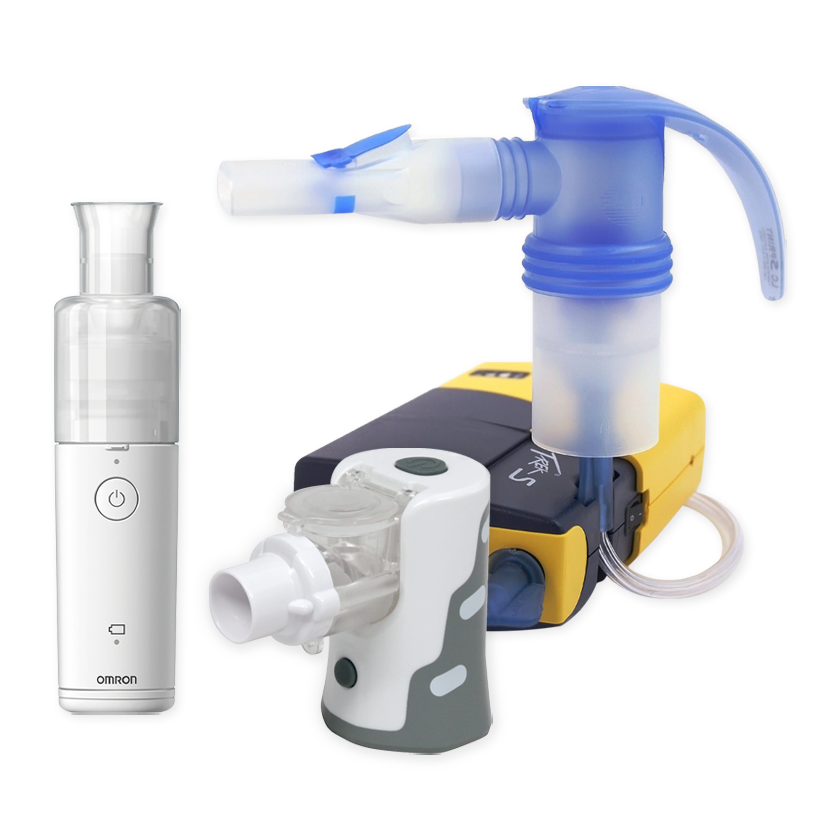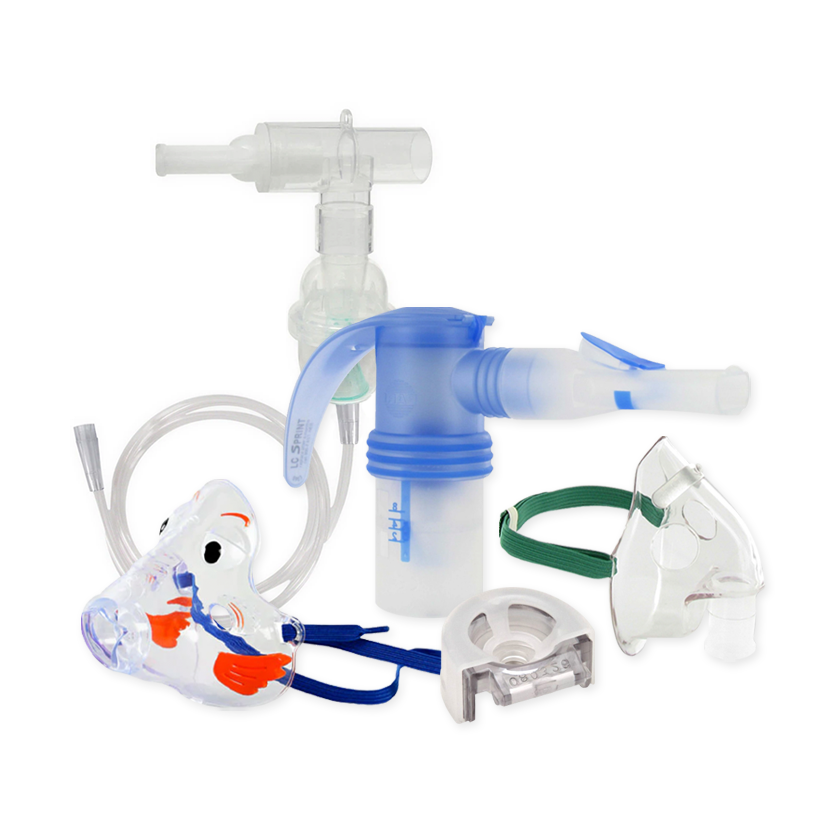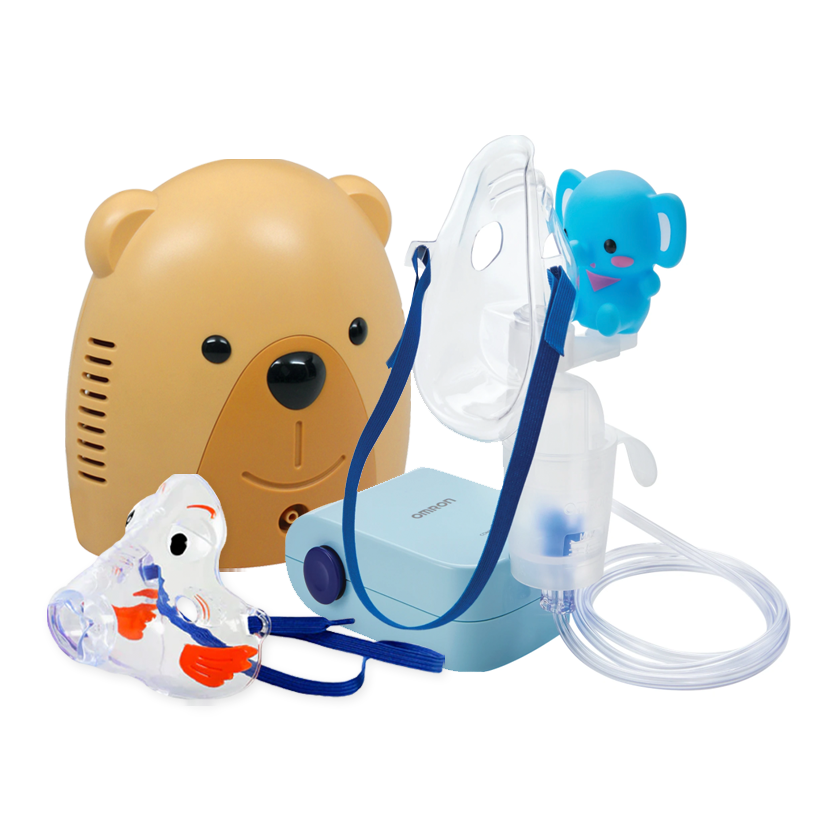Your Cart is Empty
Free Shipping on all orders over $75! Plus, free express shipping on select items.
Menu

Free Shipping on all orders over $75! Plus, free express shipping on select items.
Nebulizer Systems
Travel Nebulizers
Nebulizer Accessories
Just For Kids
Oxygen Supplies
A Guide to CPAP Masks
October 17, 2013 3 min read
 If you’ve recently been diagnosed with obstructive sleep apnea and instructed to use CPAP, you’re probably feeling a little overwhelmed. There are a lot of different masks out there, in styles and sizes accommodating a dizzying array of face shapes, facial hair, breathing methods, and sleep positions. From nasal pillow masks, to full face masks, to so-called “hybrid” masks, it can be difficult to determine just what model is right for you. To help you choose, here’s an overview of the most commonly prescribed types of CPAP masks, along with their pros and cons.
If you’ve recently been diagnosed with obstructive sleep apnea and instructed to use CPAP, you’re probably feeling a little overwhelmed. There are a lot of different masks out there, in styles and sizes accommodating a dizzying array of face shapes, facial hair, breathing methods, and sleep positions. From nasal pillow masks, to full face masks, to so-called “hybrid” masks, it can be difficult to determine just what model is right for you. To help you choose, here’s an overview of the most commonly prescribed types of CPAP masks, along with their pros and cons.
Nasal Mask
The most commonly used CPAP mask, nasal masks are frequently prescribed for first-time users. These masks encase the nose in a triangular cushion, and come with side and/or forehead straps to keep the mask in place. The tubing may go up and over the head, or hang in front. They’re good for people who sleep with their mouth closed, or who toss and turn in their sleep. However, the forehead supports may obstruct vision to a certain extent, making some patients feel claustrophobic.
Nasal Pillow Mask
Functionally speaking, nasal pillow masks are identical to typical nasal masks, except for the fact that they offer the least amount of contact with the face (great for claustrophobics!). Nasal pillow masks consist of two pillows that fit around the base of the nostrils, with no side straps: perfect for side-sleepers, or users with glasses or facial hair.
Nasal Prong Mask
A nasal prong mask is another great option for side-sleepers. Its prongs fit inside the nostrils, and the mask is secured by side and/or forehead straps that keep the mask in place. This is a convenient option, but because the pillows remain in the nostrils for so long, chafing or irritation may occur. To prevent this problem, apply a water-based lubricant to the nostrils before wearing the mask.
Full Face Mask
If you sufferer from nasal congestion or breathe through your mouth, you may be prescribed a full face mask: one that covers both your nose and mouth. These masks tend to be larger than nasal masks, with side straps and headgear to keep it in place. They also tend to leak more often than other types of CPAP masks, and can create pressure sores if there’s an improper fit.
Total Face Mask
One of the best ways to prevent pressure sores from full face masks is to invest in a total face mask. These masks cover the entire face, and are perfect for users who cannot get a good seal with other CPAP masks, or who want to read or watch TV before bed. If you have facial hair, however, you won’t be able to get a good seal.
Oral CPAP Mask
Do you sleep with your mouth open? Do you wear glasses? An oral CPAP mask might be right for you! These masks don’t use headgear, and only cover the mouth – so if you breathe nasally, you may want to look into another option. One downside to this type of mask is that you must purchase a heated humidifier to prevent the throat from drying out.
Hybrid Mask
Hybrid masks are very similar to full face masks, but with one major difference: instead of covering the nose and mouth, they are one part nasal pillow mask and one part oral mask. They deliver air into the user’s mouth and directly into their nostrils, and are recommended for patients with glasses or who have mixed sleep apnea. Because these masks incorporate nasal pillows, users must take steps to prevent chafing or irritation in the nostrils; applying a water-based lubricant before treatment will help.
Ultimately, the process of choosing the right CPAP mask all comes down to trial-and-error. You will need to try on several different types of CPAP masks before finding the one that’s right for you. Consider features like the strength of the mask seal, its size, and its level of comfort – not its looks. Keep at it, and if you have any questions, just give your primary care physician a ring!
Subscribe
Sign up to get the latest on sales, new releases and more …

NEW CUSTOMERS SAVE 10% OFF YOUR FIRST PURCHASE OF $20 OR MORE.
Code will be sent to email entered if applicable
SIGN UP FOR FUTURE SALES, NEW PRODUCTS AND ANNOUNCEMENTS
{"themeColor":"#061f77","iconColor":"#061f77","showLogo":true,"topBottomPosition":0,"rightLeftPosition":5,"iconSize":"large","iconCustomSize":64,"position":"middle-right"}



